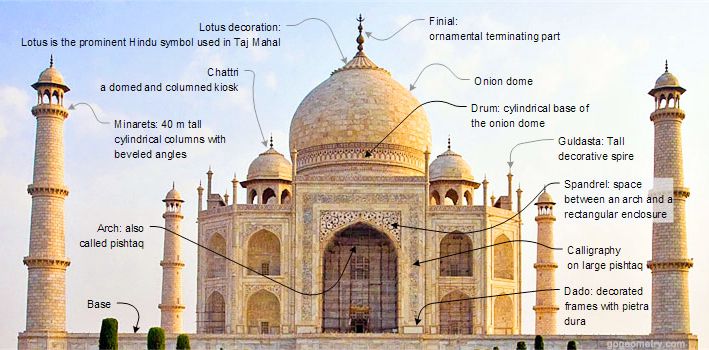Taj Mahal – A Hindu Temple (Part 1/6)


An aerial view of the Taj Mahal alias Tejo Mahalaya, ancient Hindu temple complex in Agra. For the last 300 years the world has been fooled to believe that this stupendous edifice was built by the 5th generation Mogul emperor Shahjahan to commemorate one of his dead wives–Mumtaz. The two flanking buildings although identical, only the one in the rear is known as a mosque.
The Taj Mahal has seven stories. Five of them lie sealed and barred concealing rich evidence. The marble building in the centre is flanked by two symmetrical ones. The one in the foreground is the eastern one. The one in the background is being represented as a mosque because it is to the west. They should not have been identical if only one was to be a mosque. In the courtyard at the foot of the eastern building is inlaid a full scale replica of the trident pinnacle [found at the top of the dome]. The tiny tower at the left near the western building, encloses a huge octagonal multi-storied well.

This is the massive octagonal well with palatial apartments along its seven stories. A royal staircase descends right down to the water level indicated by the tiny white patch showing the sun’s reflection.
This was the traditional treasury well of the Hindu temple palace. Treasure chests used to be stacked in the lower stories. Accountants, cashiers and treasurers sat in the upper stories. Cheques called handies used to be issued from here. On being besieged, if the building had to be surrendered to the enemy, the treasure used to be pushed into the water for salvage later after recapture. For real research, water should be pumped out of this well to reveal the evidence that lies at the bottom. This well is inside a tower near the so-called mosque to the west of the marble Taj. Had the Taj been a mausoleum this octagonal multistoried well would have been superfluous.

A frontal view of the Taj Mahal alias Tejo Mahalaya in Agra. It is octagonal because the Hindus believe in 10 directions. The pinnacle pointing to the heaven and the foundation to the nether world, plus the eight surface directions make the 10 directions. Divinity and royalty are believed to hold sway in all those 10 directions. Hence in Hindu tradition, buildings connected with royalty and divinity must have some octagonal features or the buildings themselves should be octagonal. The two flanking cupolas (two others to the rear are not seen in this photo) are also identical.
The towers at the four plinth corners served as watch towers during the day, and to hold lights at night. Hindu wedding altars and Satyanarayan worship altars invariably have such towers at corners. [Many other Hindu temples, such as those at Khajurao, also can be found to have four towers or temples, one at each corner of the temple foundation.]
The lotus flower cap on the head of the dome is a Hindu feature. Muslim domes are bald. This marble edifice has four stories. Inside the dome is an 83 ft. high hall. The Taj has a double dome. The dome one sees from inside ends like an inverted pan on the terrace. The dome seen from outside is a cover on the inner dome. Therefore, in between them is an 83 ft. hall. This may be considered as one storey. Underneath may be seen the first storey arches and the ground floor rooms. In the basement, visitors are shown one room. All these constitute the four storeys in the marble edifice. Below the marble structure are two stories in red stone reaching down to the river level. The 7th storey must be below the river level because every ancient Hindu historic building did have a basement. Thus, the Taj is a seven-storied structure.

The dome of the Taj Mahal bearing a trident pinnacle made of a non-rusting eight-metal Hindu alloy. The pinnacle served as a lightning deflector too.
This pinnacle has been blindly assumed by many to be an Islamic crescent and star, or a lightning conductor installed by the British. This is a measure of the careless manner in which Indian history has been studied till now. Visually identifiable things like this pinnacle too have been misinterpreted with impunity. The flower top of the dome, below the pinnacle, is an unmistakable Hindu sign. A full scale figure of this pinnacle is inlaid in the eastern courtyard.

Source Stephen Knapp – Taj Mahal: Was it a Vedic Temple?
Part 2 – https://kreately.in/taj-mahal-a-hindu-temple-part-2-6/
DISCLAIMER: The author is solely responsible for the views expressed in this article. The author carries the responsibility for citing and/or licensing of images utilized within the text.
